Imagine a world where switching between mobile carriers or managing multiple phone numbers becomes as easy as tapping a few buttons on your device. That’s the reality with eSIM technology, a game-changing innovation that’s paving the way for a more connected and flexible future. In this blog post, we’ll explore what eSIM is, how it works, its compatibility with various devices, and the benefits it offers over traditional physical SIM cards. So buckle up and get ready to embrace the world of eSIM!
Table of Contents
Short Summary
eSIM technology offers convenience, flexibility and environmental benefits for connecting to mobile networks.
eSIMs enable dual SIM functionality on a range of devices from iPhones and Android smartphones to wearables & gadgets.
Major network carriers offer various eSIM plans that cater to postpaid or prepaid customers with options for all budgets & needs.
Understanding eSIM Technology
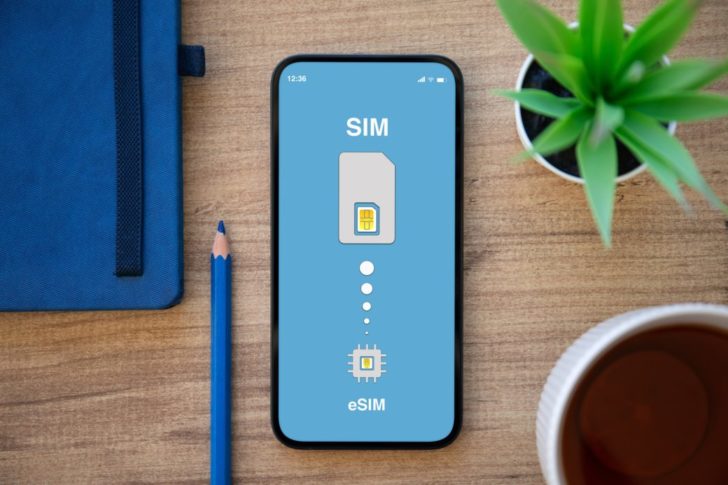
eSIM, or embedded SIM, is a digital representation of a physical SIM card embedded within a device, enabling users to connect to a mobile network without a physical SIM card. This revolutionary technology not only offers unparalleled convenience and flexibility, but also boasts a range of additional benefits, from space-saving design to environmental advantages.
So, what makes eSIMs so remarkable, and how do they work?
Learn more, please visit What is an eSIM?: Here’s everything you need to know
The Evolution of SIM Cards
The humble SIM card has come a long way since its inception. From standard, mini, micro, to nano-sized cards, the technology has evolved to meet the ever-changing demands of the mobile industry.
Enter eSIMs, the latest development in SIM card technology, which eliminates the need for physical cards altogether. Instead, eSIMs are embedded directly into devices, allowing users to switch between carriers and access cellular services from local companies while traveling abroad with just a few taps.
Say goodbye to fumbling with tiny SIM cards and adaptors, and hello to a new era of seamless connectivity.
eSIM Components and Functionality
An eSIM consists of an embedded chip and a SIM profile that stores data from multiple carriers. These components work in tandem to enable users to access a mobile network and switch between multiple phone lines within their device’s settings. This functionality provides unparalleled convenience and flexibility, allowing users to manage various phone numbers (e.g., personal and work) or switch carriers without needing to physically swap SIM cards.
The future of connectivity is here, and it’s looking brighter than ever.
Compatibility and Device Support
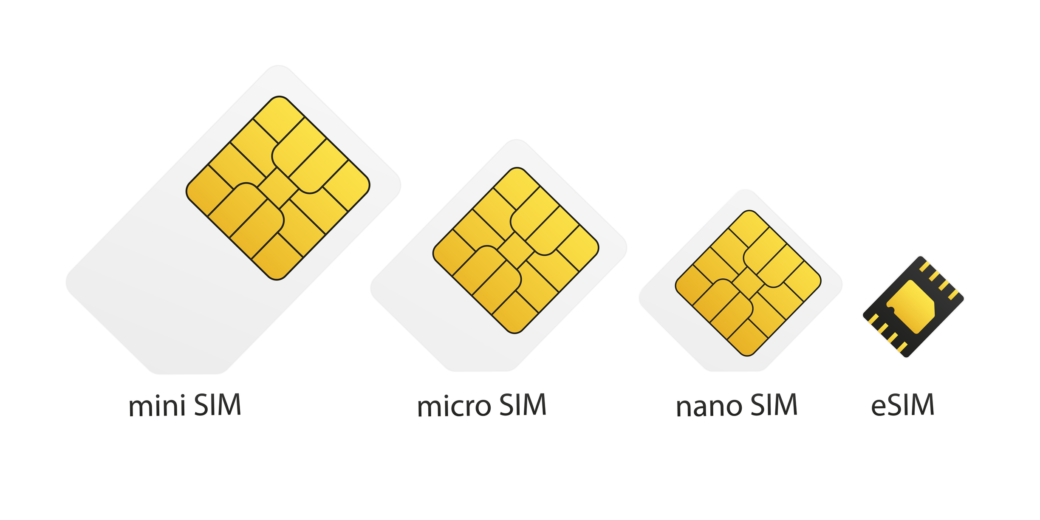
The adoption of eSIM technology is rapidly growing, with an increasing number of devices now supporting this innovative feature. From iPhones and Android smartphones to wearables and other gadgets, eSIM compatibility is becoming more widespread, simplifying connectivity and offering users a whole new level of flexibility.
Let’s take a closer look at some of the devices that are compatible with eSIMs.
iPhones with eSIM Support
Apple has been at the forefront of eSIM adoption, with iPhone models from the iPhone XS onwards supporting this technology. With eSIM compatibility, iPhone users can reap the benefits of dual SIM functionality, making it easier than ever to manage multiple phone numbers or switch between carriers without fuss.
Whether you’re a globetrotter looking to dodge hefty roaming charges or simply seeking a more convenient way to juggle your personal and work numbers, eSIM-enabled iPhones have got you covered.
Android Devices with eSIM Support
Android devices haven’t been left behind in the eSIM revolution. A growing number of Android smartphones, such as the Google Pixel 7 Pro, Samsung Galaxy S23 Ultra, and Motorola Razr 5G, now support eSIM technology. This compatibility not only offers Android users the same level of convenience and flexibility as their iPhone counterparts, but also brings the added advantage of being able to use eSIMs in a more diverse range of devices, thanks to the open Android ecosystem.
eSIM technology is becoming increasingly popular, as it allows users to switch between different carriers without having to physically swap out their SIM cards. This makes it better.
Wearables and Other Gadgets
eSIM compatibility extends beyond smartphones to a variety of wearables and other gadgets. Smartwatches like the TicWatch Pro 3 Ultra, Huawei Watch 3 Active 4G, and Samsung Galaxy Watch 4 are just a few examples of eSIM-enabled devices.
This compatibility allows users to enjoy seamless connectivity on the go, without needing to rely on their smartphones for a network connection. With eSIM technology, the possibilities for staying connected are virtually endless.
Activating and Using an eSIM
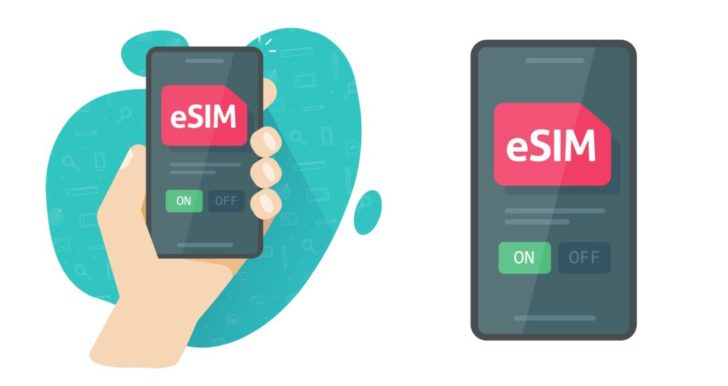
Now that we’ve explored the benefits and compatibility of eSIMs, let’s dive into the activation process. Activating an eSIM differs depending on whether you’re setting up a new, upgrading, or prepaid plan, as well as whether you’re using an iPhone or Android device.
But, no matter your device or plan, activating an eSIM is generally a quick and straightforward affair, offering far greater convenience compared to traditional SIM cards. Let’s take a closer look at the activation process for iPhones and Android devices.
Activation Process for iPhones
To activate an eSIM on an iPhone, navigate to Settings > Mobile Data > Activate an eSIM. Add eSIM and use either a QR code provided by your carrier or the carrier’s app to complete the activation.
US Mobile, for instance, has streamlined the process, allowing customers to activate their service on their new iPhone in just two minutes. With such convenience at your fingertips, activating an eSIM on your iPhone has never been easier.
Activation Process for Android Devices
Activating an eSIM on an Android device is equally simple. Head to Settings > Connections > SIM card manager >. Add a mobile plan and follow the on-screen instructions to complete the activation.
Some carriers, like T-Mobile, even offer a dedicated app for eSIM activation, making the process even more seamless for Android users. With eSIM activation just a few taps away, staying connected has never been more hassle-free.
Advantages of eSIM over Physical SIM Cards
eSIM technology offers a host of advantages over traditional physical SIM cards. From convenience and flexibility to space-saving design and environmental benefits, eSIMs are revolutionizing the way we connect and communicate.
But what exactly are these advantages, and why should you consider making the switch to eSIM? Convenience is one of the biggest benefits of eSIMs. With an eSIM, you don’t need to worry about carrying around a SIM card.
Convenience and Flexibility
One of the most significant benefits of eSIMs is their convenience and flexibility. With eSIMs, users can easily switch between carriers, manage multiple phone numbers, and enjoy seamless connectivity while traveling, all without the need to physically swap SIM cards or carry multiple devices.
This level of convenience and adaptability is unparalleled, making eSIMs the perfect choice for those seeking a more streamlined and efficient way to stay connected.
Space-Saving Design
eSIMs also offer a space-saving design, as they’re embedded directly into devices and eliminate the need for a physical SIM tray. This not only enables devices to be more compact and smaller in size, but also allows for better dust and waterproofing ratings, as there are fewer openings for water and debris to enter.
With eSIMs, device manufacturers have more freedom to experiment with innovative designs and features, ushering in a new era of sleek and stylish gadgets.
Environmental Benefits
Finally, eSIMs come with environmental advantages. As eSIM adoption grows, fewer physical SIM cards will be produced and shipped, resulting in a reduction of discarded SIM cards and the associated environmental impact.
By embracing eSIM technology, we’re not only enjoying the benefits of greater convenience and flexibility, but also contributing to a more sustainable and eco-friendly future.
eSIM and Dual SIM Functionality
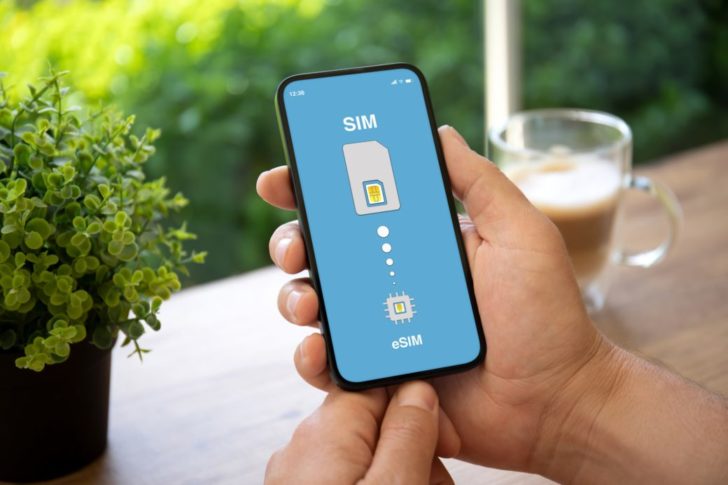
Dual SIM functionality is another advantage of eSIM technology, enabling users to access and manage multiple phone lines from their device’s settings. Whether you’re using two eSIMs, as in the case of the new iPhone 14 in the US, or a combination of one physical SIM card and one eSIM, dual SIM functionality offers a host of benefits for those seeking greater control over their communication channels.
Let’s explore the benefits of dual SIM phones and some popular dual SIM devices.
Benefits of Dual SIM Phones
Dual SIM phones offer several advantages, such as the ability to manage calls and messages for two distinct numbers separately, greater control over communication channels, enhanced privacy, and the flexibility of two plans. By utilizing dual SIM functionality, users can take advantage of the most attractive offers from carriers, while enjoying the convenience of having two distinct numbers for personal and professional use.
With dual SIM phones, staying connected and organized has never been easier.
Popular Dual SIM Devices
A wide variety of popular devices now offer dual SIM functionality, such as the Samsung Galaxy S23 series, Samsung Galaxy Z Fold 4 and Z Flip 4, vivo X90 series, OnePlus 11, Samsung Galaxy A32 5G or A72, iPhone 13 Pro Max, and Google Pixel 7. These devices provide users with the flexibility and convenience of dual SIM functionality, allowing for seamless management of multiple phone numbers and plans.
No matter your communication needs, there’s a dual SIM device out there that’s perfect for you.
eSIM Plans from Major Network Carriers
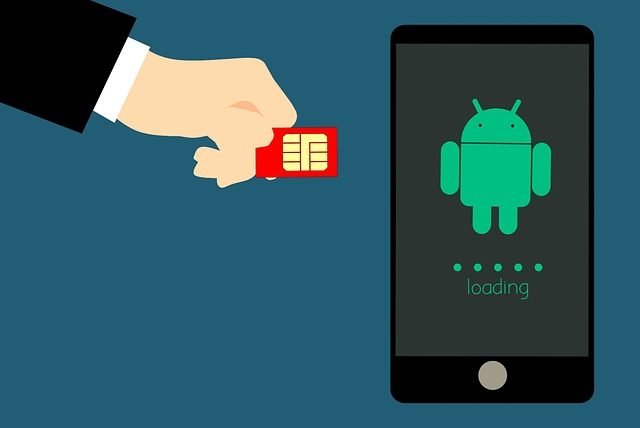
As eSIM technology gains traction, major network carriers are jumping on board, offering eSIM plans to cater to the growing demand. AT&T, T-Mobile, Verizon, Vodafone, and Orange are just a few examples of carriers providing eSIM plans for their customers.
Let’s take a closer look at the eSIM plans offered by these major network carriers.
AT&T eSIM Plans
AT&T offers eSIM plans for both postpaid and prepaid customers, catering to a wide range of needs and budgets. From affordable prepaid plans to feature-packed postpaid options, AT&T provides a variety of eSIM plans to ensure that every customer can enjoy the benefits of this innovative technology.
T-Mobile eSIM Plans
T-Mobile provides prepaid eSIM plans, such as the Simply Prepaid plan with unlimited voice, text, and 10GB of LTE data for $40, and the Tourist Plan with 1000 minutes, unlimited text, and 2GB.
In addition, T-Mobile offers eSIM activation for postpaid plans, giving customers the flexibility to choose the plan that best suits their needs while enjoying the convenience of eSIM technology.
Verizon eSIM Plans
Verizon offers eSIM plans that can be accessed through My Verizon for smartphones with an integrated eSIM. Catering to both postpaid and prepaid customers, Verizon’s eSIM plans provide a variety of options to meet the diverse needs of their users. Ensuring seamless connectivity and flexibility for all.
Vodafone eSIM Plans
Vodafone provides eSIM plans for their Pay monthly customers at no additional cost, making it easy and affordable for users to enjoy the benefits of eSIM technology. With a variety of plans to choose from, Vodafone customers can take advantage of the convenience, flexibility, and space-saving design offered by eSIMs.
eSIMs are becoming increasingly popular as more and more devices are compatible with them. They are easy to set up and can be used to switch between different networks quickly and easily. Additionally, they are more secure than traditional SIM cards, as they are not encrypted.
Orange eSIM Plans
Orange offers customers the option to switch to an eSIM or have both an eSIM and a traditional SIM card. Compatible with a wide range of devices, including Apple, Huawei, Google Pixel, Motorola, and Samsung, Orange’s eSIM plans provide users with the flexibility and convenience they need to stay connected in today’s fast-paced world.
With an eSIM, customers can easily switch between plans and providers without having to physically change their SIM card. This makes it easier to stay connected while travelling, or to take advantage of the best deals.
Summary
In conclusion, eSIM technology is revolutionizing the way we connect and communicate, offering unparalleled convenience, flexibility, and a host of other benefits over traditional physical SIM cards. As more and more devices become compatible with eSIMs, and major network carriers continue to offer eSIM plans, it’s clear that the future of connectivity is bright and full of possibilities. So whether you’re an iPhone user, an Android aficionado, or a wearable enthusiast, there’s never been a better time to embrace the world of eSIM and experience the benefits firsthand.
Frequently Asked Questions
What is the downside to eSIM?
The downside to eSIM is that it can be difficult to switch devices, not as easy to transfer from one device to another, and relies on the quality of existing mobile and cellular networks for connectivity.
As such, this technology may not be ideal for those who need quick access to their phone numbers and other services in emergencies.
What is eSIM and how do you get it?
eSIM is a digital SIM card that lets you connect to mobile network operators without needing a physical SIM card. You can set up and manage the plan within your device’s settings, meaning you don’t have to go to a store to buy or swap out physical SIMs.
eSIMs are becoming increasingly popular as they are more convenient for those wanting to change networks quickly. They are also more secure, as they are not as vulnerable to theft or loss as physical SIM cards.









